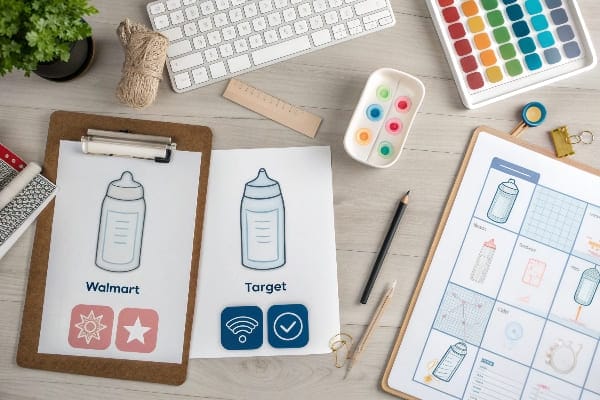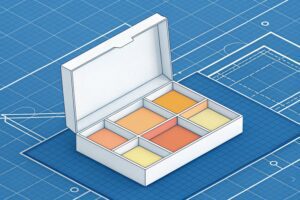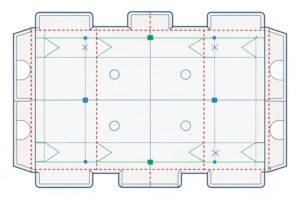在为沃尔玛和目标创建婴儿产品时,了解每个零售商二线要求的细节至关重要。没有适当的设计方法,您的产品甚至可能无法进入货架上。但是不用担心,本指南将帮助您浏览设计过程,因此您可以确保婴儿产品在两家商店的成功中都有准备。
如果您想为沃尔玛和塔吉特设计产品,那么了解其需求以及婴儿产品的最佳设计技巧至关重要。在这篇文章中,我们将介绍每个零售商的清单和设计技巧,以确保您的产品既实用又具有吸引力。

在研究细节之前,让我们首先退后一步。设计婴儿产品时,您必须考虑零售商和消费者的需求。而且,您必须确保您的产品安全,实用且对父母有吸引力。让我们探索您需要开始的内容。
婴儿清单需要什么?
当创建零售婴儿产品时,清单通常是压倒性的。无论是针对沃尔玛还是目标,两家零售商都有严格的包装,设计和质量指南。但是,满足这些要求是将您的产品进入商店的关键。
为了确保您的婴儿产品达到行业标准,您需要涵盖一些基本方面,例如安全性,可用性和演示文稿。这包括包装设计,材料认证以及遵守监管标准。

一旦知道了基础知识,让我们深入了解对沃尔玛和目标都很重要的细节。这包括确保您的产品符合所有安全指南1 对父母来说既有吸引力又具有功能2
沃尔玛的婴儿产品清单
- 产品安全3 :确保所有使用的材料对婴儿安全。这意味着没有小部分,窒息危险或有毒物质。
- 包装:包装必须坚固,易于打开,并清楚地标有所有必要的安全性和使用信息。
- 品牌:品牌应该清晰简单。沃尔玛购物者正在寻找可识别的,值得信赖的品牌。
- 认证4 :准备表明您的产品符合消费者产品安全1委员会(CPSC)设定的安全标准。
- 定价5 :沃尔玛倾向于优先考虑负担能力,因此定价必须在市场上具有竞争力。
Target的婴儿产品清单
- 美学吸引力6 :目标消费者通常会吸引更具视觉吸引力和现代产品。您的包装和产品设计应反映当前的趋势,并提供父母会喜欢的美学。
- 耐用性:就像沃尔玛一样,Target要求婴儿产品必须耐用并由高质量的材料制成。确保您的产品可以经常使用。
- 生态友好7 :更多的消费者正在寻找生态意识的产品。考虑提供可回收的有机材料或包装。
- 详细的标签:确保包装上清楚地说明了所有必要的说明,警告和认证。
- 创新功能8 :Target喜欢具有独特的创新功能的产品,使它们与市场上的其他产品区分开来。
简而言之,两家零售商都需要产品来满足高标准,但是其需求之间存在细微的差异,这些差异可能会影响您的产品应如何设计和包装。
如何设计婴儿产品?
设计婴儿产品就是了解零售商和最终消费者的需求。在设计过程中,功能和安全性是您的首要任务。但是,吸引人的美学对于吸引忙碌的父母为婴儿购物的眼睛同样重要。
要创建有效的婴儿产品,您需要专注于安全功能,简单性和易用性。该设计在美学上应该令人愉悦,但也应实用和实用。

设计过程会感到压倒性,尤其是当您试图满足零售商和消费者的需求9时。但是,有一些简单的策略可以帮助简化流程10并确保您的产品检查所有框。让我们分解婴儿产品最重要的设计原理11 。
关键设计技巧
- 安全首先:对于婴儿产品,安全始终是您的首要任务。这意味着使用无毒材料12 ,确保没有锋利的边缘,并设计易于使用婴儿的产品。
- 用户友好性:考虑您的产品对于父母使用的容易程度。简单,直观的设计几乎不需要父母的努力将更加成功。
- 耐用性:婴儿在事情上往往很难,因此耐用性13是关键。用高质量的材料设计您的产品,可以承受磨损。
- 吸引力:鲜艳的色彩和简单,干净的设计对父母和婴儿都有吸引力。想想在架子上脱颖而出并吸引父母的眼睛。
- 舒适:婴儿需要舒适。设计具有柔软舒适的材料的产品,使婴儿和父母都开心。
通过关注这些因素,您可以设计一种产品,该产品不仅在货架上脱颖而出,而且还提供了父母想要的功能和安全性。
我在哪里可以获得免费的婴儿东西?
寻找免费的婴儿产品可能是一个挑战,但是在几个地方,您可以免费获得物品。无论您是寻找婴儿产品的父母还是在婴儿行业中寻找品尝产品的企业,都有免费物品。
几家公司和组织提供免费的婴儿产品,作为促销活动,赠品或样本计划的一部分。您还可以通过慈善组织和在线社区找到婴儿物品。
%[家庭捐赠项目]( https://popdisplay.me/wp-content/uploads/2025/04/imagine_prompt-_prompt-_-family_visiting_a_local_charita.jpharita.jpg donative
如果您正在寻找预算上的婴儿物品,或者只需要样品进行产品测试,则可以从检查这些地方开始:
免费的婴儿物品资源
- 亚马逊婴儿注册表14 :注册亚马逊的婴儿注册表可以为您提供免费的样品,折扣和促销优惠。
- Target Baby注册表15 :Target提供新父母免费的欢迎套件,并在您注册其注册表时装有婴儿产品样品。
- 制造商网站16 :一些婴儿产品公司为新父母或期待婴儿的人提供免费样品或折扣代码。
- 慈善组织:寻找免费或以折扣价提供婴儿用品的当地慈善机构和组织。
- 在线社区:Facebook Marketplace,Freecycle和Craigslist等网站通常会有父母赠送二手或新的婴儿产品。
这些资源可以帮助您找到免费的婴儿产品来尝试或使用,从而为您节省金钱,同时确保您为小家伙那里获得优质的物品。
出售婴儿产品有利可图吗?
销售婴儿产品可能是高利润的,但是战略性地接近市场很重要。婴儿产品始终需要需求,父母愿意为孩子们花钱。但是,竞争可能是激烈的,价格必须具有竞争力。
是的,如果您满足正确的市场需求并提供质量,安全和功能性的产品,则出售婴儿产品可能会有利可图。但是,您需要考虑生产成本,零售商要求和消费者的喜好。

如果您正在考虑进入婴儿产品市场17 ,请记住以下一些因素以最大程度地提高利润:
市场需求
- 一致的需求:婴儿每天出生,父母一直需要为孩子们提供产品。结果,全年对婴儿产品的需求保持稳定。
- 利基市场:考虑针对利基市场18,例如生态友好的婴儿产品19 ,豪华婴儿物品或有机材料。父母越来越多地寻找满足其特定需求的专业产品。
竞争价格
- 负担得起的价格20 :在确保其仍然是高质量的同时,竞争产品的价格。在负担得起的价格和维持质量之间找到平衡至关重要。
- 捆绑21 :以折扣价提供一系列相关产品(例如,带有婴儿配件的尿布袋),以提高感知价值。
营销和分销
- 零售商:将您的产品进入沃尔玛和Target 22可能是有利可图的,但是您需要满足他们的所有要求。
- 电子商务23 :不要忽略在线销售的潜力。亚马逊,Etsy和您自己的网站等平台可以帮助您吸引全球受众。
通过战略性地接近婴儿产品市场24 ,您可以利用具有巨大潜力的有利可图的行业。
结论
为沃尔玛和目标创建婴儿产品可能是有利可图的,但是它需要仔细注意设计,安全和零售商指南。牢记这些因素,您的产品将有很大的成功机会。
创建吸引父母的产品是零售成功的关键。发现增强产品设计和功能的策略。 ↩
了解产品安全对于父母至关重要。探索此链接,以了解婴儿产品安全的最佳实践和准则。 ↩
认证对于确保产品安全至关重要。发现婴儿产品的必要认证以保护您的孩子。 ↩
竞争价格是零售的关键。了解有效地定价婴儿产品的策略,以吸引客户并促进销售。 ↩
探索此链接,以发现如何增强婴儿产品的视觉吸引力,从而吸引更多的父母。 ↩
了解婴儿产品制造中的可持续实践,以满足消费者对生态意识选择的需求。 ↩
了解婴儿产品中最新的创新,这些创新可以帮助您的产品在竞争激烈的市场中脱颖而出。 ↩
学习如何平衡这些需求可以提高市场接受和客户满意度,这对于成功至关重要。 ↩
探索有效的策略可以节省时间和资源,从而使您的设计过程更加高效和富有成效。 ↩
了解这些原则可以增强您的产品的吸引力和功能,从而确保其符合安全性和可用性标准。 ↩
探索此资源将帮助您了解婴儿产品设计中安全的重要性,从而确保父母的安心。 ↩
该链接将提供有关耐用性如何影响婴儿产品的寿命和安全性的见解,这对父母至关重要。 ↩
探索亚马逊婴儿注册表,以发现如何获得婴儿产品的免费样品和折扣。 ↩
查看目标婴儿注册表,以了解有关新父母的婴儿产品样品的免费欢迎套件。 ↩
访问制造商网站以查找独家优惠和免费样品,可以帮助您节省婴儿必需品。 ↩
了解市场趋势可以帮助您确定机会并在婴儿产品行业做出明智的决定。 ↩
确定利基市场可以导致有针对性的营销策略,并提高竞争市场的盈利能力。 ↩
探索环保产品的好处可以帮助您吸引环保父母并增强您的产品。 ↩
探索此链接,以发现有效的定价策略,以平衡负担能力和质量,确保客户满意度和忠诚度。 ↩
了解捆绑产品的好处及其如何通过此信息资源来增强客户的看法和销售。 ↩
了解沃尔玛和目标的要求可以显着提高您的零售分配成功。 ↩
探索电子商务策略可以帮助您最大程度地提高在线销售,并有效地吸引更多的受众。 ↩
了解婴儿产品市场的趋势可以指导您的营销策略和产品开发。 ↩





